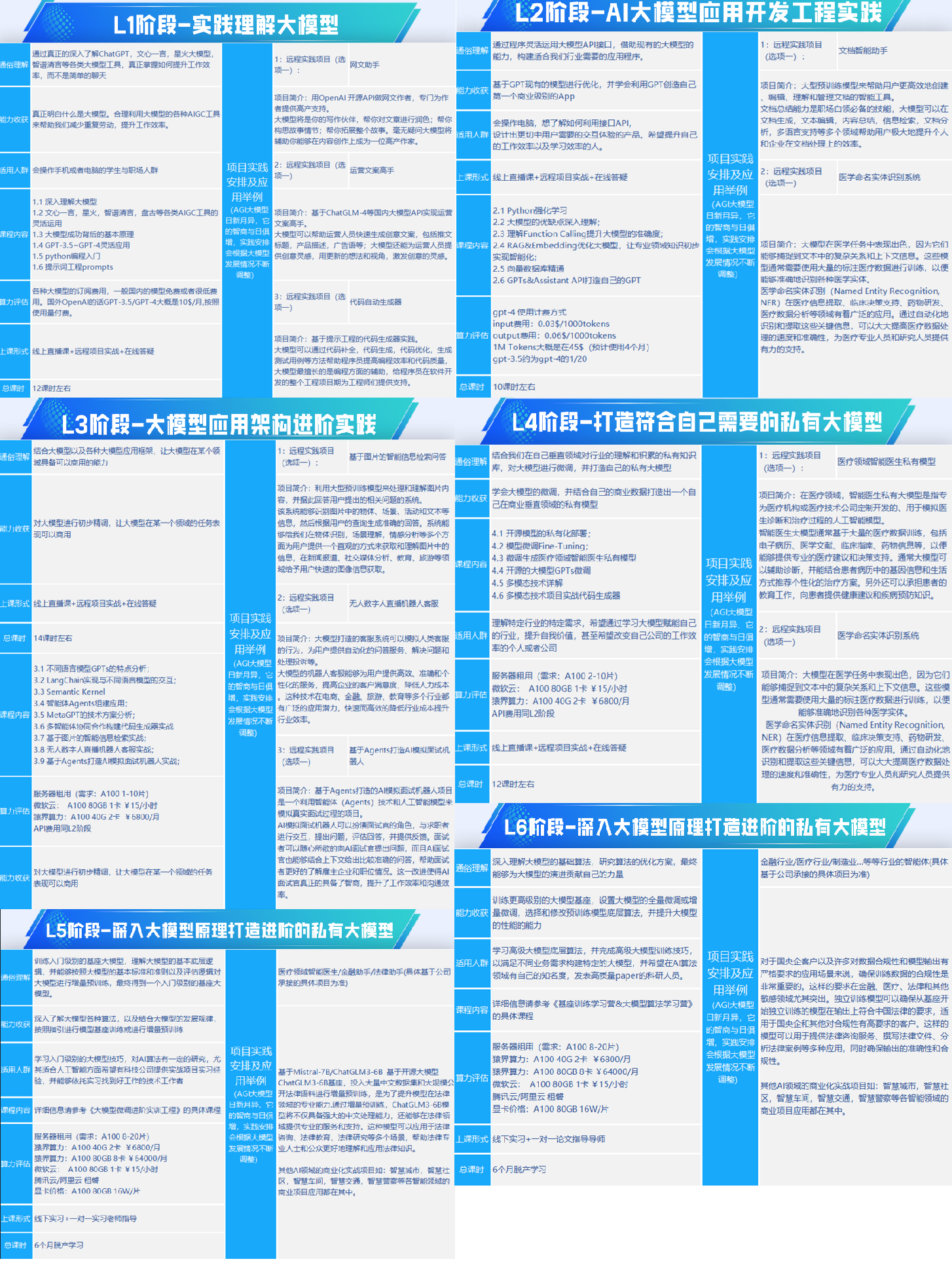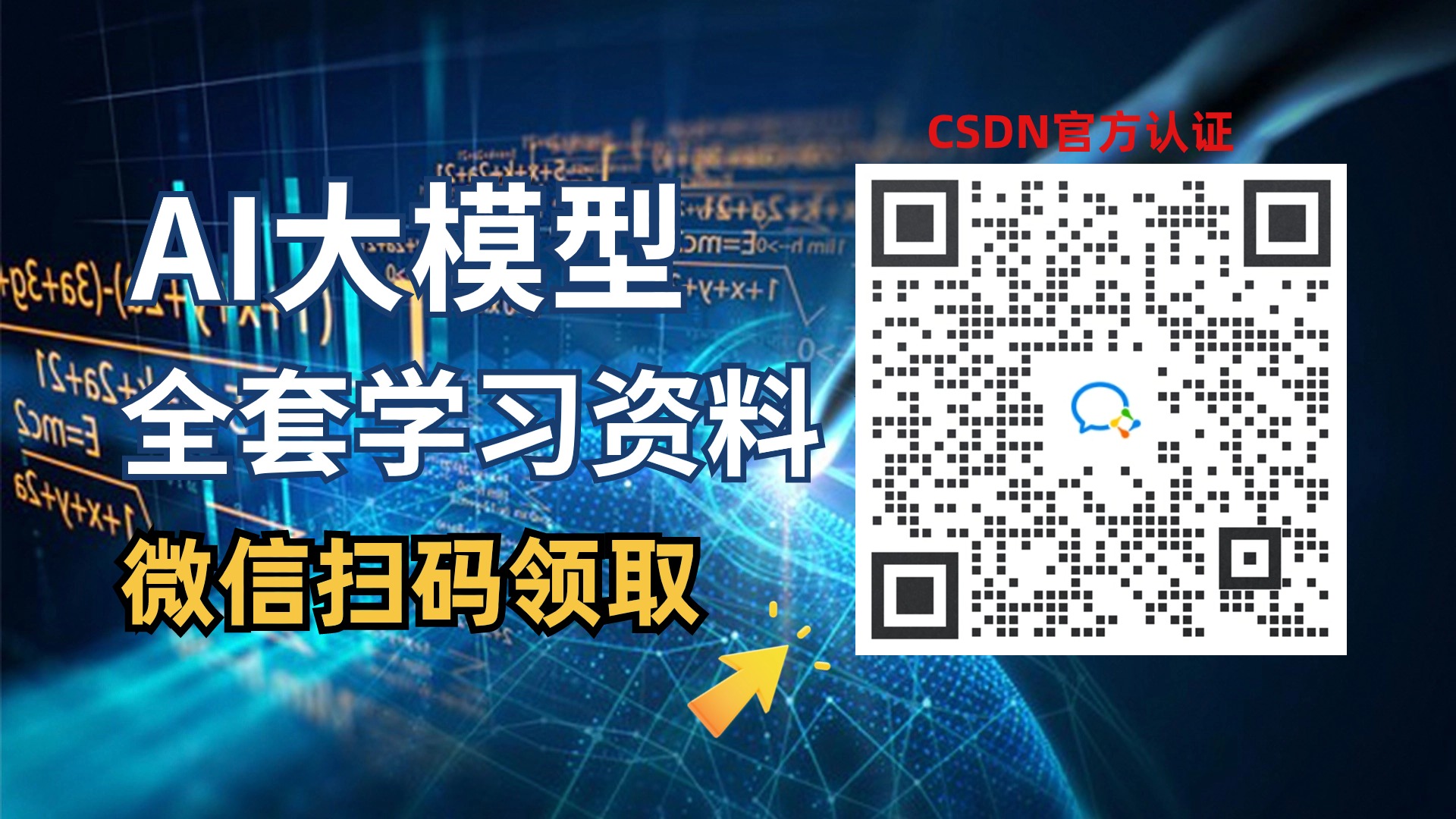前言
2024年随着大模型进一步增强升级,越来越多的大模型应用落地,经过初期的探索和研究,目前业界逐渐收敛聚聚于两个主要的应用方向:RAG和Agents。今天我们就来先聊聊这个RAG~
一.RAG基本介绍
RAG:全称Retrieval-Augmented Generation,检索增强生成。我们知道本次由ChatGPT掀起的LLM大模型浪潮,其核心就是Generation生成,而 Retrieval-augmented 就是指除了 LLM 本身已经学到的知识之外,通过外挂其他数据源的方式来增强 LLM 的能力,这其中就包括了外部向量数据库、外部知识图谱、文档数据,WEB数据等。  如上图所示,经过Doc Loader,加载各种数据源的数据,经过embedding向量化后存储进向量数据库。这是Retrieval-augmented基础数据处理器。用户通过 QA向LLM提问,会通过QA问题向向量数据库召回相似度较高的上下文,通过Prompt提示词一起发给LLM,LLM通过问题与上下文一起生成答案返回给用户。
如上图所示,经过Doc Loader,加载各种数据源的数据,经过embedding向量化后存储进向量数据库。这是Retrieval-augmented基础数据处理器。用户通过 QA向LLM提问,会通过QA问题向向量数据库召回相似度较高的上下文,通过Prompt提示词一起发给LLM,LLM通过问题与上下文一起生成答案返回给用户。
我们不经会问,为什么大模型动不动就千亿参数级别,涵盖了PB级的数据,还需要自己外挂数据源。
这里面主要几方面的原因:
- 数据更新: LLM数据来源截止日期一般都是在2022年,而且它无法实时了解最新的信息。外挂知识库可以提供更新的、实时的信息,确保模型对新兴事实和领域内的最新发展有所了解。
- 领域专业知识: 尽快训练LLM的数据量很庞大,但是在某些特定领域,如医学、法律或科学,可能需要深入的专业知识。LLM在这些领域可能无法提供高度准确的信息,因此如果能提供这方面的数据,它能工作得好。
- 定制需求: 对于某些应用场景,用户可能需要LLM在特定方面的专业化,例如公司内部知识库、产品规格等。外挂知识库可以帮助模型更好地服务于特定用户或组织的需求。
- 避免错误: 在特定领域,LLM可能会生成不准确或误导性的信息。通过使用外挂知识库,可以提高答案的准确性,避免潜在的错误。 在实际应用中,外挂知识库通常与LLM进行集成,通过定制的方式来满足用户或企业的特殊需求,提供更专业、准确和个性化的服务。这种集成可以帮助弥补LLM通用性的不足,使其更好地适应特定的应用场景。
好,我们了解了RAG的基本概念,接下来我们就一起深入技术细节,了解RAG的实现原理
二.RAG技术实现
2.1 数据加载(Document Loaders)
RAG的第一要解决的问题是数据来源的问题,数据有多种来源,各种格式的数据,如csv、html、json、markdown、PDF。所有的这些数据都需要有对应的Document Loaders来进行加工处理,将信息正确提取出来。
以[langchain](LLM应用框架)为例,目前langchain社区中已经实现了154种文档加载器 如html:
from langchain_community.document_loaders import UnstructuredHTMLLoader
loader = UnstructuredHTMLLoader("example_data/fake-content.html")
data = loader.load()
更多的文档加载器么,可以访问langchain api

可以看到目前langchain社区目前涵盖了国内网诸多网站和平台的数据,如百度云盘、腾讯云文档,甚至包括了区块链信息。
2.2 数据处理(Text Splitters)
2.2.1数据分割
加载完数据后,我们下一步通常需要将数据进行拆分,尤其是在处理长文本的情况下。如何将文本进行分割处理,听起来很简单,比如我按400个字符,直接切片就好了,但往往这样应用效果不甚理想。
我们通常希望能将将语义相关的文本片段保留在一起。 重点其实就在这个“语义相关”,比如中文,我们希望是句号为分割符,比如一段长代码,我们希望以编程语言特点来分割,比如Python中的def、class
以langchain为例,langchain目前支持HTML、字符、MarkdownHeader和多种代码分割,甚至正在实验中的语义分割。
- 按MarkdownHeader分割
from langchain.text_splitter import MarkdownHeaderTextSplitter
markdown_document = "# Foo\n\n ## Bar\n\nHi this is Jim\n\nHi this is Joe\n\n ### Boo \n\n Hi this is Lance \n\n ## Baz\n\n Hi this is Molly"
headers_to_split_on = [
("#", "Header 1"),
("##", "Header 2"),
("###", "Header 3"),
]
markdown_splitter = MarkdownHeaderTextSplitter(headers_to_split_on=headers_to_split_on)
md_header_splits = markdown_splitter.split_text(markdown_document)
md_header_splits
{'content': 'Hi this is Jim \nHi this is Joe', 'metadata': {'Header 1': 'Foo', 'Header 2': 'Bar'}}
{'content': 'Hi this is Molly', 'metadata': {'Header 1': 'Foo', 'Header 2': 'Baz'}}
- 按语义分割
from langchain_experimental.text_splitter import SemanticChunker
from langchain_openai.embeddings import OpenAIEmbeddings
# This is a long document we can split up.
with open("../../state_of_the_union.txt") as f:
state_of_the_union = f.read()
text_splitter = SemanticChunker(OpenAIEmbeddings())
docs = text_splitter.create_documents([state_of_the_union])
print(docs[0].page_content)
Madam Speaker, Madam Vice President, our First Lady and Second Gentleman. Members of Congress and the Cabinet. Justices of the Supreme Court. My fellow Americans. Last year COVID-19 kept us apart. This year we are finally together again. Tonight, we meet as Democrats Republicans and Independents. But most importantly as Americans. With a duty to one another to the American people to the Constitution. And with an unwavering resolve that freedom will always triumph over tyranny. Six days ago, Russia’s Vladimir Putin sought to shake the foundations of the free world thinking he could make it bend to his menacing ways. But he badly miscalculated. He thought he could roll into Ukraine and the world would roll over. Instead he met a wall of strength he never imagined. He met the Ukrainian people. From President Zelenskyy to every Ukrainian, their fearlessness, their courage, their determination, inspires the world. Groups of citizens blocking tanks with their bodies. Everyone from students to retirees teachers turned soldiers defending their homeland. In this struggle as President Zelenskyy said in his speech to the European Parliament “Light will win over darkness.” The Ukrainian Ambassador to the United States is here tonight. Let each of us here tonight in this Chamber send an unmistakable signal to Ukraine and to the world. Please rise if you are able and show that, Yes, we the United States of America stand with the Ukrainian people. Throughout our history we’ve learned this lesson when dictators do not pay a price for their aggression they cause more chaos. They keep moving.
2.2.2 数据信息(metadata)
在进行文本分割的同时,我们还可以给分割的文本添加一下metadata的数据,方便记录该文本段的一些基本信息,如文章来源、作者信息等。
一个是能在进行文本召回时可以作为过滤搜索,另一方面还在作为发给LLM的补充数据,让LLM生成的内容更为丰富
metadatas = [{"document": 1}, {"document": 2}]
documents = text_splitter.create_documents(
[state_of_the_union, state_of_the_union], metadatas=metadatas
)
print(documents[0])
2.2.3 分割参数
在进行文本分割时,我们还需要重点关注两个参数 chunk_size 和 chunk_overlap,这两个参数分别表示分割长度和两段分割文本重合长度。
在实际RAG应用中,chunk_size需要结合向量数据库的来选择合适大小,比如腾讯云的向量数据库,一次只支持单块512token(400左右字符)的大小写入,那chunk_size就应该设设置400多。chunk_overlap的大小建议设置在chunk_size的1/5左右,在召回多段文本时,可以增加数据的丰富度。
实际情况请结合具体项目进行设置和测试验证
2.3 数据向量化 (Text embedding models)
在进行数据分割后,需要对文本数据段进行向量化,目前主流的中文向量化模型有
| 模型 | 中文支持 |
|---|---|
| M3E | 是 |
| text2vec | 是 |
| OpenAIEmbeddings | 是 |
使用OpenAIEmbeddings向量化处理
from langchain_openai import OpenAIEmbeddings
embeddings_model = OpenAIEmbeddings(openai_api_key="...")
embeddings = embeddings_model.embed_documents(
[
"Hi there!",
"Oh, hello!",
"What's your name?",
"My friends call me World",
"Hello World!"
]
)
len(embeddings), len(embeddings[0])
(5, 1536)
目前Langchain支持37种embedding model,这些向量化模型核心功能就将文本向量化,提供给向量数据库进行存储
2.4 向量数据库 (Vector stores)
 数据向量化后,就需要将向量数据存储进向量数据库。目前有很多开源向量数据库,如chromadb、faiss-cpu、lancedb。云服务厂商也陆续推出了向量数据库服务,包括腾讯云、阿里云的向量数据库
数据向量化后,就需要将向量数据存储进向量数据库。目前有很多开源向量数据库,如chromadb、faiss-cpu、lancedb。云服务厂商也陆续推出了向量数据库服务,包括腾讯云、阿里云的向量数据库
lancedb向量数据库使用
from langchain_community.document_loaders import TextLoader
from langchain_openai import OpenAIEmbeddings
from langchain.text_splitter import CharacterTextSplitter
from langchain_community.vectorstores import LanceDB
import lancedb
db = lancedb.connect("/tmp/lancedb")
table = db.create_table(
"my_table",
data=[
{
"vector": embeddings.embed_query("Hello World"),
"text": "Hello World",
"id": "1",
}
],
mode="overwrite",
)
# Load the document, split it into chunks, embed each chunk and load it into the vector store.
raw_documents = TextLoader('../../../state_of_the_union.txt').load()
text_splitter = CharacterTextSplitter(chunk_size=1000, chunk_overlap=0)
documents = text_splitter.split_documents(raw_documents)
db = LanceDB.from_documents(documents, OpenAIEmbeddings(), connection=table)
如以Langchain VertorStore为基础类,实现的支持腾讯云的向量数据库服务 TencentVectorDB
目前Langchain支持47种向量数据库接入,开发者也可以自行实现VertorStore,定义自己的向量数据库。
主要实现以下三个抽象方法
@abstractmethod
def add_texts(
self,
texts: Iterable[str],
metadatas: Optional[List[dict]] = None,
**kwargs: Any,
) -> List[str]:
"""Run more texts through the embeddings and add to the vectorstore.
Args:
texts: Iterable of strings to add to the vectorstore.
metadatas: Optional list of metadatas associated with the texts.
kwargs: vectorstore specific parameters
Returns:
List of ids from adding the texts into the vectorstore.
"""
@abstractmethod
def similarity_search(
self, query: str, k: int = 4, **kwargs: Any
) -> List[Document]:
"""Return docs most similar to query."""
@classmethod
@abstractmethod
def from_texts(
cls: Type[VST],
texts: List[str],
embedding: Embeddings,
metadatas: Optional[List[dict]] = None,
**kwargs: Any,
) -> VST:
"""Return VectorStore initialized from texts and embeddings."""
- add_texts: 将文本数据向量化,添加进向量数据库
- similarity_search: 从向量数据库召回数据
- from_texts:类方法,实现将文本数据向量化,添加进向量数据库
2.5 数据召回(Retrievers)
在讲解完数据加载、数据处理、数据向量化和向量数据库后,我们开始进入数据召回的环节。数据召回是我们向 LLM提问时,需要根据我们提问的问题向向量数据库召回相关的文档数据,并和问题加载进Prompt发送给LLM。
比如下面这段提示词:
template = """Answer the question based only on the following context:
{context}
Question: {question}
"""
context就是我们召回的上下文
数据召回的方法有许多种,应用在不同应用场景,当前Langchain主流支持的Retrievers有以下8种
| Name | Index Type | Uses an LLM | When to Use | Description |
|---|---|---|---|---|
| Vectorstore | Vectorstore | No | If you are just getting started and looking for something quick and easy. | This is the simplest method and the one that is easiest to get started with. It involves creating embeddings for each piece of text. |
| ParentDocument | Vectorstore + Document Store | No | If your pages have lots of smaller pieces of distinct information that are best indexed by themselves, but best retrieved all together. | This involves indexing multiple chunks for each document. Then you find the chunks that are most similar in embedding space, but you retrieve the whole parent document and return that (rather than individual chunks). |
| Multi Vector | Vectorstore + Document Store | Sometimes during indexing | If you are able to extract information from documents that you think is more relevant to index than the text itself. | This involves creating multiple vectors for each document. Each vector could be created in a myriad of ways - examples include summaries of the text and hypothetical questions. |
| Self Query | Vectorstore | Yes | If users are asking questions that are better answered by fetching documents based on metadata rather than similarity with the text. | This uses an LLM to transform user input into two things: (1) a string to look up semantically, (2) a metadata filer to go along with it. This is useful because oftentimes questions are about the METADATA of documents (not the content itself). |
| Contextual Compression | Any | Sometimes | If you are finding that your retrieved documents contain too much irrelevant information and are distracting the LLM. | This puts a post-processing step on top of another retriever and extracts only the most relevant information from retrieved documents. This can be done with embeddings or an LLM. |
| Time-Weighted Vectorstore | Vectorstore | No | If you have timestamps associated with your documents, and you want to retrieve the most recent ones | This fetches documents based on a combination of semantic similarity (as in normal vector retrieval) and recency (looking at timestamps of indexed documents) |
| Multi-Query Retriever | Any | Yes | If users are asking questions that are complex and require multiple pieces of distinct information to respond | This uses an LLM to generate multiple queries from the original one. This is useful when the original query needs pieces of information about multiple topics to be properly answered. By generating multiple queries, we can then fetch documents for each of them. |
| Ensemble | Any | No | If you have multiple retrieval methods and want to try combining them. | This fetches documents from multiple retrievers and then combines them. |
| Long-Context Reorder | Any | No | If you are working with a long-context model and noticing that it’s not paying attention to information in the middle of retrieved documents. | This fetches documents from an underlying retriever, and then reorders them so that the most similar are near the beginning and end. This is useful because it’s been shown that for longer context models they sometimes don’t pay attention to information in the middle of the context window. |
这里简述一下不同Retrievers的主要应用场景,大家可以具体问题具体分析,再去查阅一下相关文档
- Vectorstore 基础的向量召回方法,根据用户问题直接向向量数据库召回数据
- ParentDocument 如果你文档数据有许多不同的小块信息,你可以根据问题检索出小块信息,再根据小块信息去索引出原文档或者更大块的数据,将大块数据作为上下文发送给LLM
- Multi Vector 如果你有相关问题的数据集,可以为问题和文档分别存储到不同的向量数据库,在检索时可以根据问题检索出合适文档上下文
- Self Query 如果你提出的问题可以通过基于元数据(而不是与文本的相似性)来获取文档,可以使用这种Retrievers,利用LLM的能力,自动生成对应的检索方法,来召回数据
- Contextual Compression 如果您发现您检索的文档包含太多不相关的信息,并且分散了LLM的注意力,可以利用上下文压缩的方法,将召回的数据利用LLM进行数据处理
- Time-Weighted Vectorstore 如果你的文档数据中包含时间相关的数据,可以考虑用此Retriever
- Multi-Query Retriever 用户提出的问题很复杂,需要多个不同的信息来回答,可以使用此Retriever,利用LLM生成多个相关的问题,再分别从向量数据库召回数据
- Ensemble 如果您有多种检索方法,并希望尝试将它们组合起来,可以使用此Retriever
- Long-Context Reorder 当你需要召回多段上下文数据时,但发现LLM并没有根据你的上下文来回答问题时,可以考虑使用 Retriever对你召回的数据进行重新排序,将相似度较高的排在前面,让LLM能更好的利用上下文来回答问题
2.5.1 数据召回算法
在数据召回中,目前业内有两种较为通用的召回算法
- 相似度匹配算法(Similarity Search with Euclidean Distance)
这是向量数据库自身具备的特点,通过比较向量之间的距离来判断它们的相似度。
COLLECTION_NAME = "state_of_the_union_test"
db = PGVector.from_documents(
embedding=embeddings,
documents=docs,
collection_name=COLLECTION_NAME,
connection_string=CONNECTION_STRING,
)
query = "What did the president say about Ketanji Brown Jackson"
docs_with_score = db.similarity_search_with_score(query)
for doc, score in docs_with_score:
print("-" * 80)
print("Score: ", score)
print(doc.page_content)
print("-" * 80)
- 最大边界相关算法(Maximal Marginal Relevance)
采用这个算法,会优化召回的数据段之间的相似程度和多样性,对数据重新打分
docs_with_score = db.max_marginal_relevance_search_with_score(query)
for doc, score in docs_with_score:
print("-" * 80)
print("Score: ", score)
print(doc.page_content)
print("-" * 80)
算法Python实现
def maximal_marginal_relevance(
query_embedding: np.ndarray,
embedding_list: list,
lambda_mult: float = 0.5,
k: int = 4,
) -> List[int]:
"""Calculate maximal marginal relevance."""
if min(k, len(embedding_list)) <= 0:
return []
if query_embedding.ndim == 1:
query_embedding = np.expand_dims(query_embedding, axis=0)
similarity_to_query = cosine_similarity(query_embedding, embedding_list)[0]
most_similar = int(np.argmax(similarity_to_query))
idxs = [most_similar]
selected = np.array([embedding_list[most_similar]])
while len(idxs) < min(k, len(embedding_list)):
best_score = -np.inf
idx_to_add = -1
similarity_to_selected = cosine_similarity(embedding_list, selected)
for i, query_score in enumerate(similarity_to_query):
if i in idxs:
continue
redundant_score = max(similarity_to_selected[i])
equation_score = (
lambda_mult * query_score - (1 - lambda_mult) * redundant_score
)
if equation_score > best_score:
best_score = equation_score
idx_to_add = i
idxs.append(idx_to_add)
selected = np.append(selected, [embedding_list[idx_to_add]], axis=0)
return idxs
我们可以在数据召回实践中,测试不同算法下的效果,来选择合适的算法。
三.总结

最后,我们对RAG进行一下总结。RAG底层依赖LLM大模型和数据获取、数据存储等相关技术,在RAG技术层面基于底层技术,共实现了数据加载、数据处理、数据向量化、向量数据库和数据召回等五种技术。可以使用这个5种技术,完成RAG应用实现。

如何学习AI大模型?
我在一线互联网企业工作十余年里,指导过不少同行后辈。帮助很多人得到了学习和成长。
我意识到有很多经验和知识值得分享给大家,也可以通过我们的能力和经验解答大家在人工智能学习中的很多困惑,所以在工作繁忙的情况下还是坚持各种整理和分享。但苦于知识传播途径有限,很多互联网行业朋友无法获得正确的资料得到学习提升,故此将并将重要的AI大模型资料包括AI大模型入门学习思维导图、精品AI大模型学习书籍手册、视频教程、实战学习等录播视频免费分享出来。

第一阶段: 从大模型系统设计入手,讲解大模型的主要方法;
第二阶段: 在通过大模型提示词工程从Prompts角度入手更好发挥模型的作用;
第三阶段: 大模型平台应用开发借助阿里云PAI平台构建电商领域虚拟试衣系统;
第四阶段: 大模型知识库应用开发以LangChain框架为例,构建物流行业咨询智能问答系统;
第五阶段: 大模型微调开发借助以大健康、新零售、新媒体领域构建适合当前领域大模型;
第六阶段: 以SD多模态大模型为主,搭建了文生图小程序案例;
第七阶段: 以大模型平台应用与开发为主,通过星火大模型,文心大模型等成熟大模型构建大模型行业应用。

👉学会后的收获:👈
• 基于大模型全栈工程实现(前端、后端、产品经理、设计、数据分析等),通过这门课可获得不同能力;
• 能够利用大模型解决相关实际项目需求: 大数据时代,越来越多的企业和机构需要处理海量数据,利用大模型技术可以更好地处理这些数据,提高数据分析和决策的准确性。因此,掌握大模型应用开发技能,可以让程序员更好地应对实际项目需求;
• 基于大模型和企业数据AI应用开发,实现大模型理论、掌握GPU算力、硬件、LangChain开发框架和项目实战技能, 学会Fine-tuning垂直训练大模型(数据准备、数据蒸馏、大模型部署)一站式掌握;
• 能够完成时下热门大模型垂直领域模型训练能力,提高程序员的编码能力: 大模型应用开发需要掌握机器学习算法、深度学习框架等技术,这些技术的掌握可以提高程序员的编码能力和分析能力,让程序员更加熟练地编写高质量的代码。

1.AI大模型学习路线图
2.100套AI大模型商业化落地方案
3.100集大模型视频教程
4.200本大模型PDF书籍
5.LLM面试题合集
6.AI产品经理资源合集
👉获取方式:
😝有需要的小伙伴,可以保存图片到wx扫描二v码免费领取【保证100%免费】🆓






















 548
548

 被折叠的 条评论
为什么被折叠?
被折叠的 条评论
为什么被折叠?








